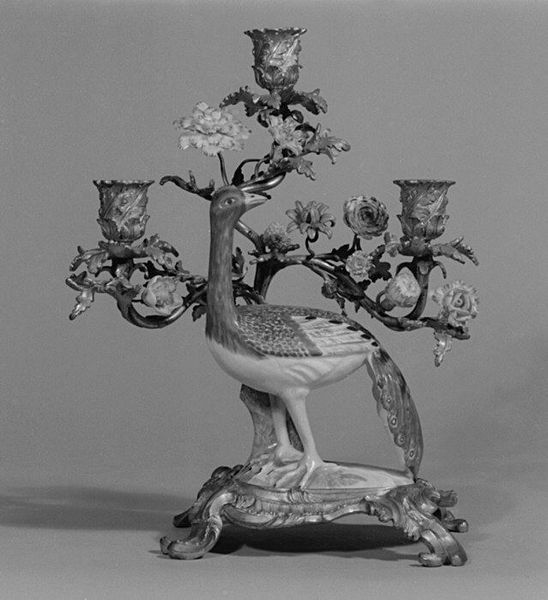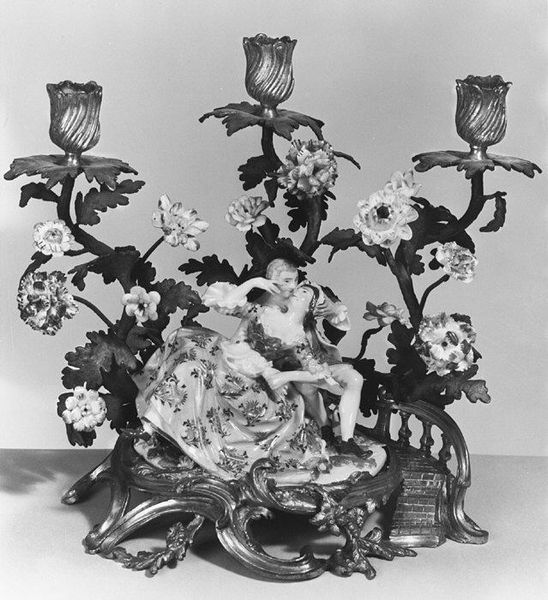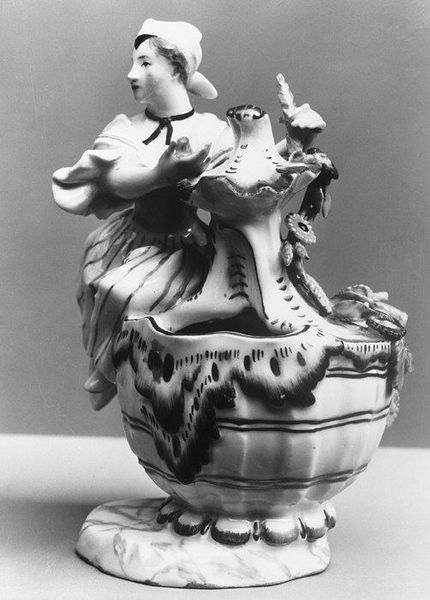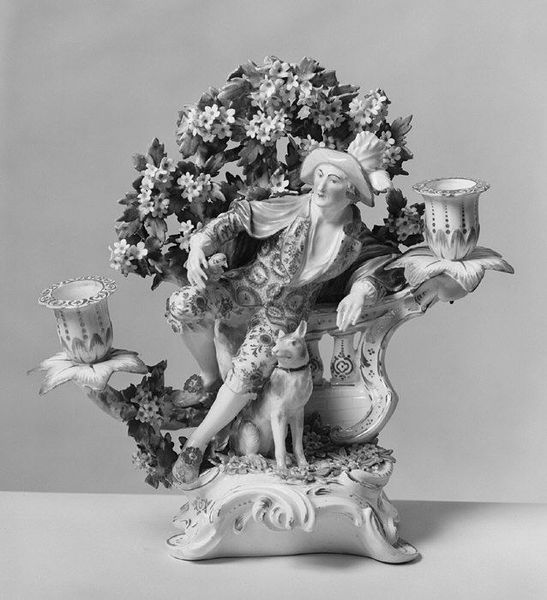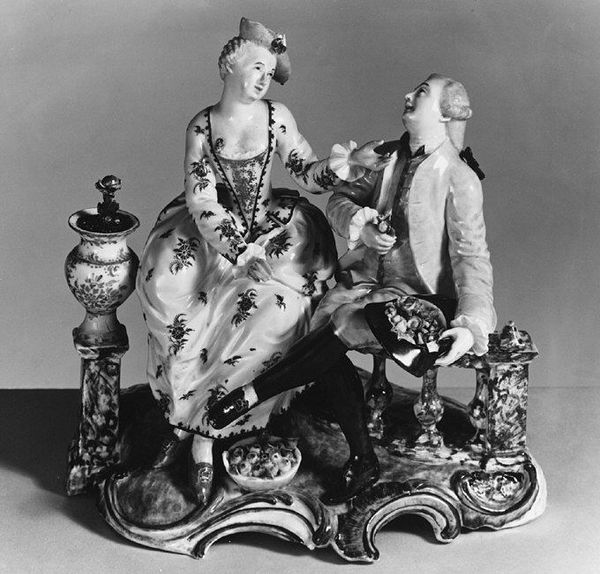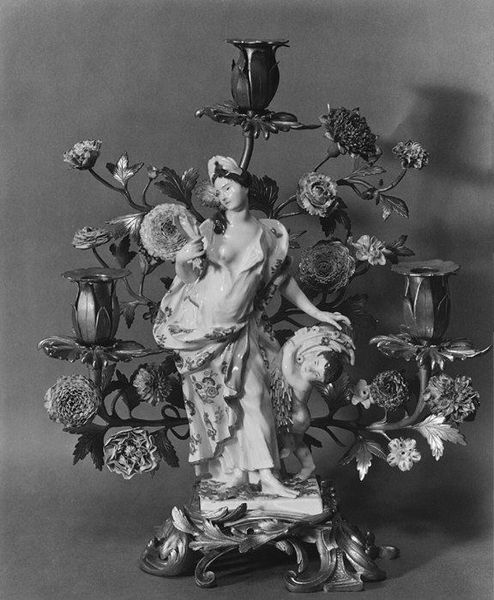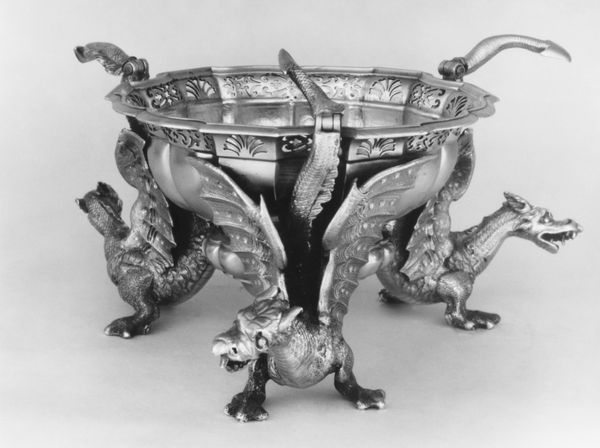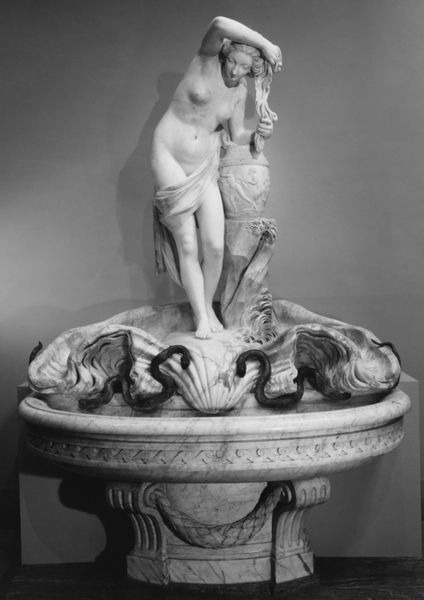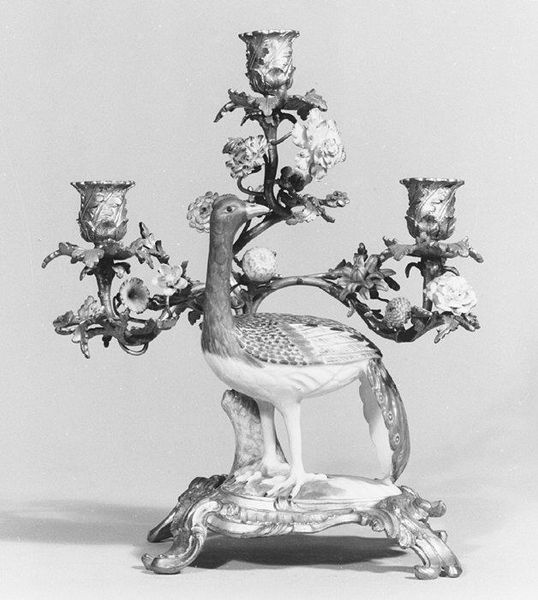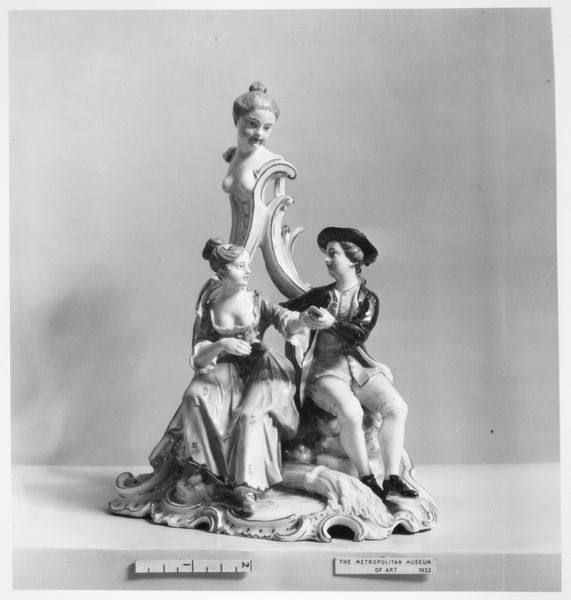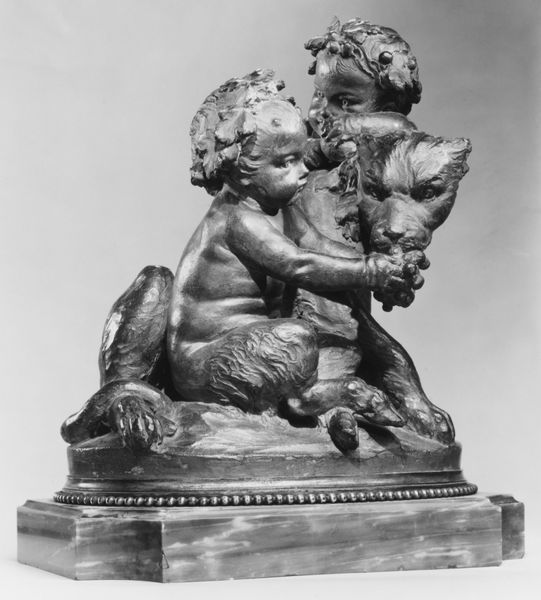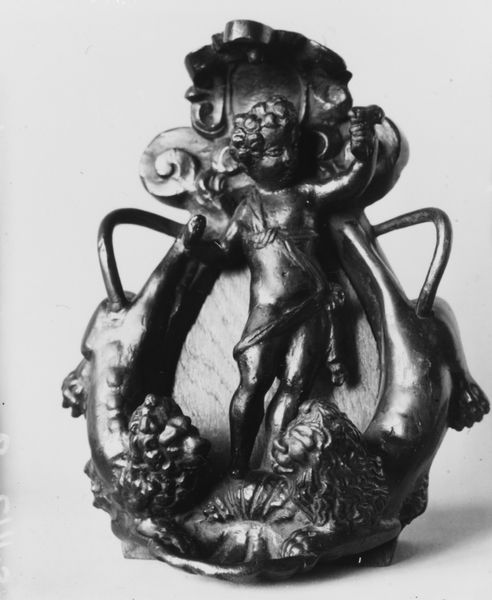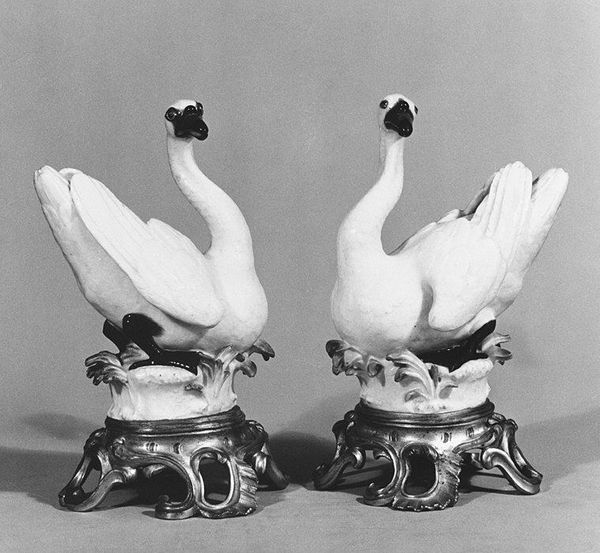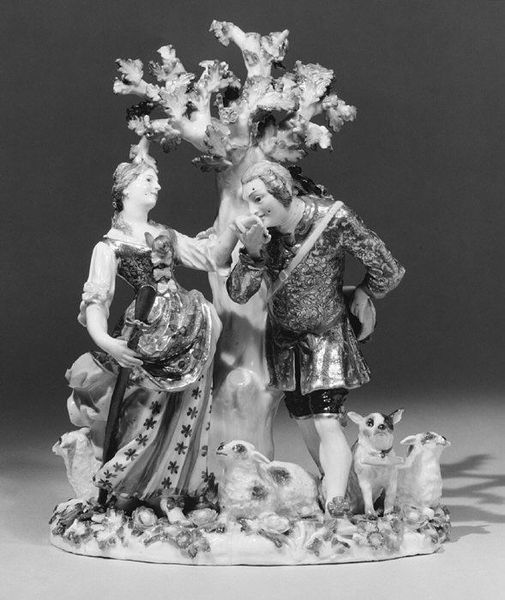
ceramic, porcelain, sculpture
#
sculpture
#
ceramic
#
porcelain
#
sculpture
#
decorative-art
#
rococo
Dimensions: Height: 9 in. (22.9 cm)
Copyright: Public Domain
Editor: Here we have a porcelain sculpture titled "Peacock," crafted in 1741 by the Meissen Manufactory. The piece exudes a sense of ornate, almost theatrical, display. What historical context do you think informed such a grandiose work? Curator: It’s tempting to simply appreciate the rococo extravagance. However, it's crucial to consider what this peacock signified in 18th-century European society. Peacocks, often associated with wealth and power, became emblems of aristocratic self-fashioning during the Enlightenment. Doesn't it strike you how the peacock’s exaggerated plumage mimics the elaborate fashions and powdered wigs of the elite? It is almost as though the artist is pointing out this performance. Editor: That's a fascinating interpretation! I hadn't thought about it as a reflection on aristocracy itself. So, beyond aesthetics, you’re suggesting it’s a commentary? Curator: Precisely. Meissen porcelain was itself a luxury commodity, catering to an exclusive clientele. By creating this peacock, they were not only showcasing their technical skill but also subtly engaging with the values of their patrons. Who holds the power, and is this symbolic expression pushing against, or supporting those that have it? I’d pose to you, how do you interpret that the symbol and actual meaning are now nearly inseparable? Editor: It’s all very circular, isn’t it? The elite commission art that reflects their status, which in turn reinforces that status. But the very excess can read as satire. I’ll never look at decorative art the same way! Curator: Excellent! The goal is to continually re-evaluate art with a critical eye and to be open to unexpected interpretations and insights. This peacock might seem like simple ornamentation, but the true beauty lies in its potential to unveil broader cultural narratives of the past, that continue to reveal themselves to us.
Comments
No comments
Be the first to comment and join the conversation on the ultimate creative platform.
